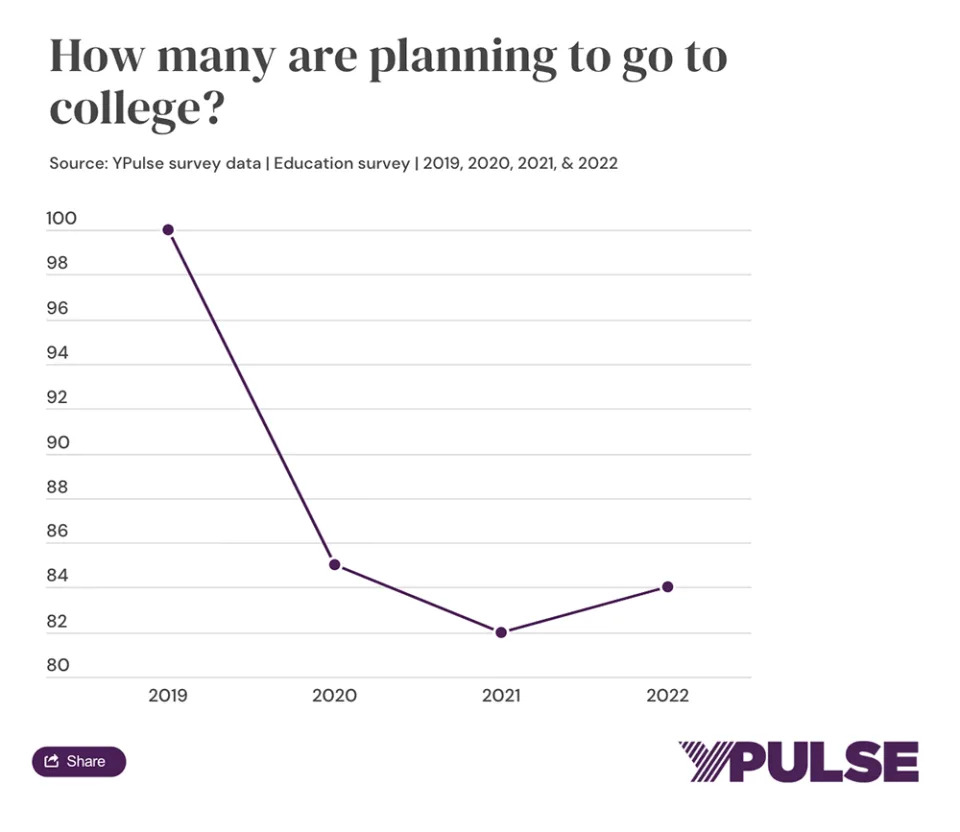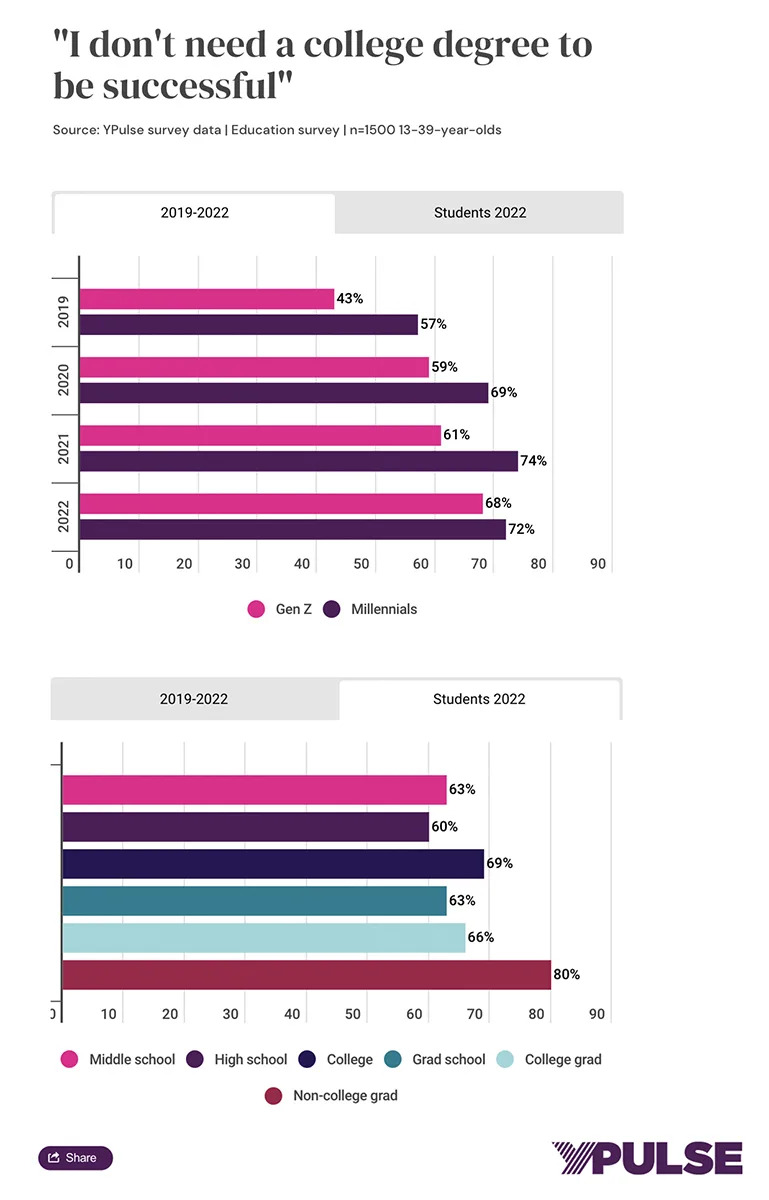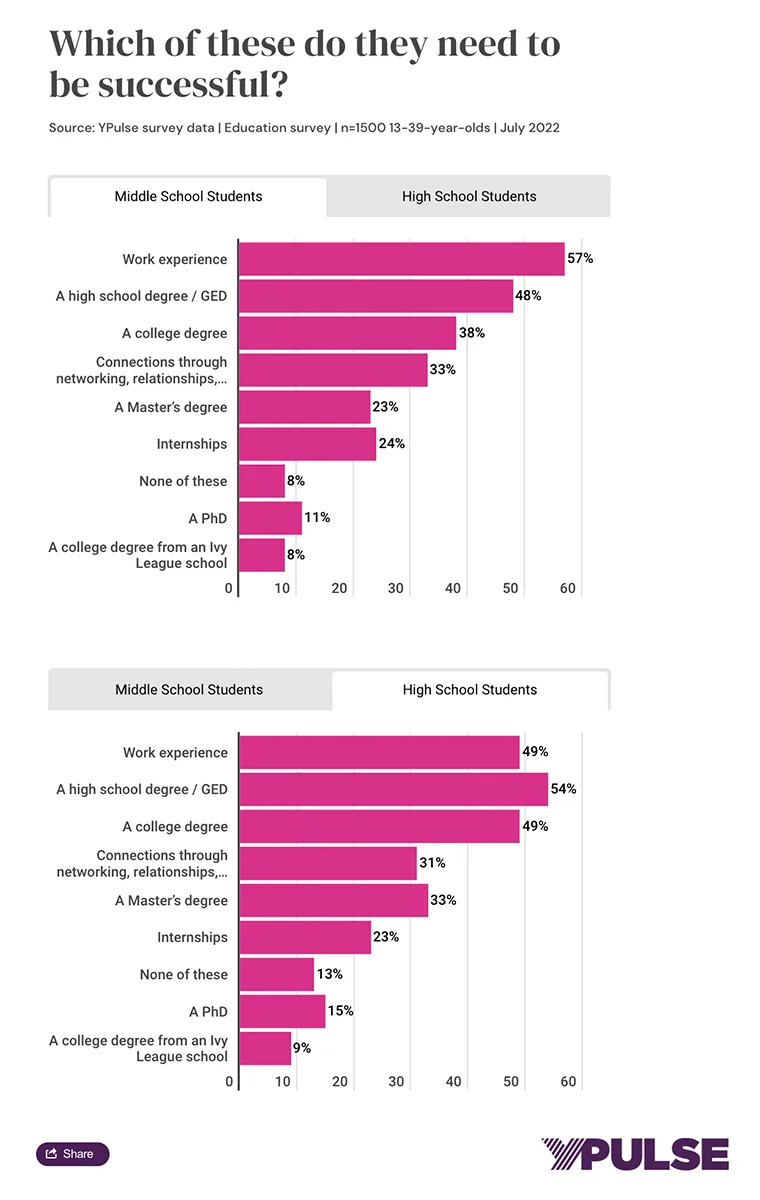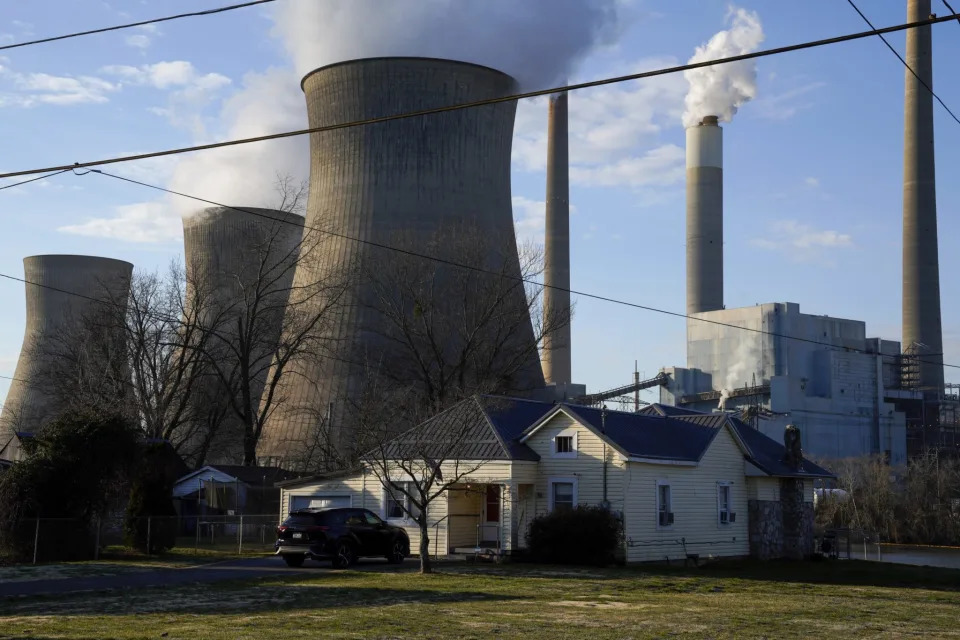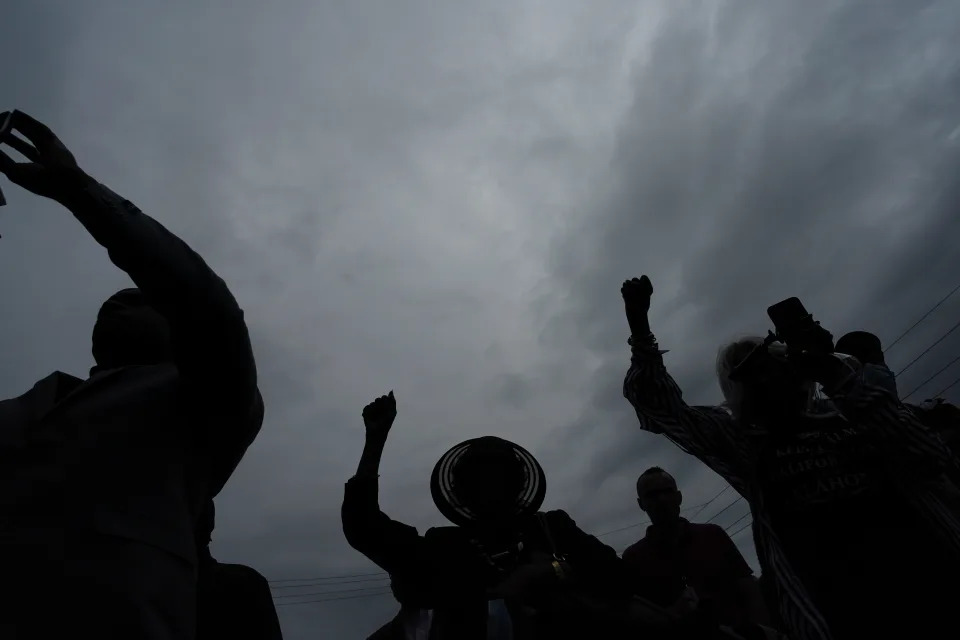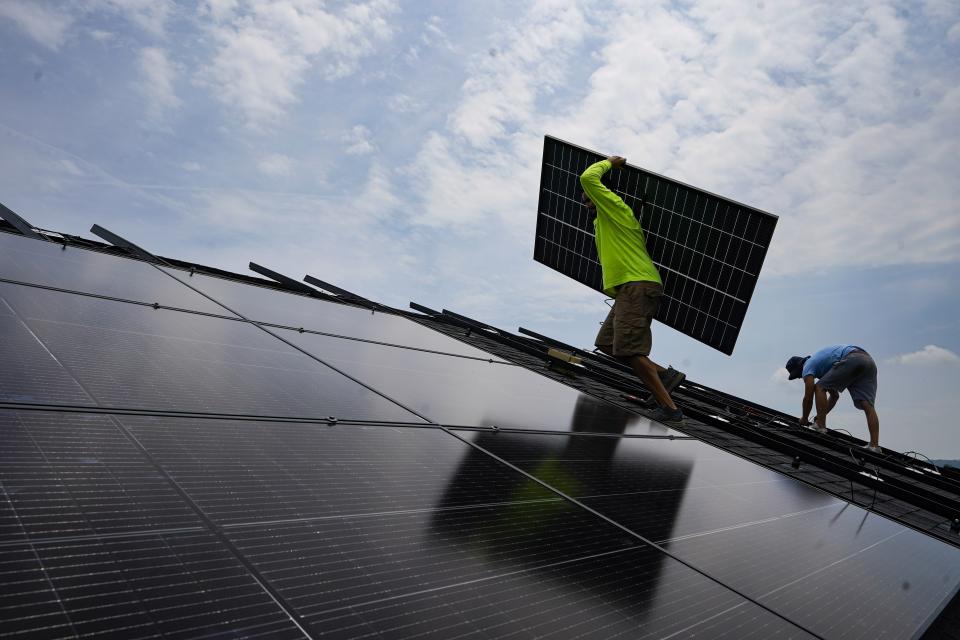Conspiracy Theory Kingpin Calls for Hunter Biden’s Execution
At a wild pitstop of the ReAwaken America tour, headlined by Donald Trump Jr., Stew Peters demanded “permanent accountability” for another presidential failed son
BY TIM DICKINSON
ROLLING STONE
SEPTEMBER 1, 2023

CONSPIRACY THEORIST STEW Peters made a startling demand for public executions at the latest stop on the ReAwaken America tour — calling for the death of Joe Biden’s son Hunter as well as Dr. Anthony Fauci, whom Peters insisted should “hang from a length of thick rope until he is dead.”
Peters speaks in the argot of the tin-foil-hat set. To hear him tell it, Fauci deserves the gallows because the federal physician-scientist supposedly backed a Wuhan “bioweapons lab” — and that this “illegal research” cost “millions of lives.” The younger Biden should get the “Julius and Ethel Rosenberg” treatment, Peters insisted, for the “treason” of “selling this country off to rich oligarchs.” Peters also demanded that Alejandro Mayorkas, the secretary of Homeland Security, be executed as “a treasonous traitor” because he has permitted legions of “rapists and murderers and killers and goons” to breach the border.
“In the world that we are going to build,” Peters declared, “traitors will hang.”
As Peters ramped up this violent diatribe, including with a call to drown doctors who care for transgender patients, no one cut his microphone. The North Las Vegas crowd didn’t recoil; rather, they filled the giant air-conditioned tent hall with hoots and hollers of approval. After Peters thundered his demand for “permanent accountability with extreme prejudice,” emcee Clay Clark treated Peters as if he were a WWE star. “Ladies and gentlemen,” he intoned. “Let’s hear it for Stuuuuuuuuuuuuuu Peters!!”
ReAwaken America is a traveling, far-right roadshow, headlined by pardoned criminal Gen. Michael Flynn, and Clark, the Tulsa-based entrepreneur radio personality. It has drawn raucous crowds across the country, with an atmosphere that’s part political convention, part religious revival, and part QAnon circus. Just minutes after Peters’ call for Hunter Biden’s execution, a different presidential failson, Donald Trump Jr., picked up the same red-white-and-blue mic, and began preaching to the MAGA minions about the dangers and “derangement” of the Left.
Peters couldn’t be a more natural fit in this setting. He is a media maven for a country hooked on conspiracy theories,catering to a religious, red-pilled audience that chooses to live in a dark irreality, full of horrific plots, satanic forces, and illicit knowledge. No longer just a sideshow on the right’s lunatic fringe, Peters, through his dark films and on his nightly streaming broadcast, is reaching an audience of millions. Increasingly, he’s playing host to elected officials, including sitting members of congress, at least one of whom praises him as a “friend.”
Peters is a prolific conspiracy content creator. In the last two years, he has churned out a pair of feature-length films — “Watch the Water” and “Died Suddenly” — each falsely purporting to reveal demonic plots behind the novel coronavirus and the “bioweapon” vaccines allegedly foisted on an unsuspecting public by a nefarious cabal.
His first film absurdly purported that Covid is connected to snake venom in the water, and that mRNA jabs transform humans into satanic “hybrids.” The second movie spreads the widely debunked conspiracy theory that Covid vaccines are causing an epidemic of heart failure — which Peters paints as part of a genocidal plot by “globalist” elites to “depopulate” the world. The noxious films have been streamed by tens of millions of viewers.
In addition to the viral success of his smooth-brained cinema, Peters has also built a large audience for his weeknight broadcasts of the “Stew Peters Show,” which has more than half a million subscribers on Rumble alone. Peters did not respond to an interview request to discuss his worldview or his calls for public hangings. But such calls to violence — in particular toward Fauci — are a staple of Peters’ schtick. As is lofting new, ever-more-absurd conspiracy theories, like that the Titan submersible was destroyed to prevent the public from learning that the Titanic was not, in fact, sunk by an iceberg but in a nefarious plot linked to the Rothschilds.
RELATED
‘Alex Jones Did Nothing Wrong’: Meet the Christian Nationalist Behind ‘Pastors For Trump’
In a sane world, Peters would be politically radioactive. But the conspiratorial audience that Peters is building is, to be frank, a key component of the modern GOP base. And these days, Peters’ broadcast is not just filled with fellow-citizen crackpots. It’s becoming a venue for right-wing GOP politicians who treat Peters as just another media persona. Peters has interviewed many members of the United States Congress, including Paul Gosar, Bob Good, Pete Sessions, and Andy Biggs, who signed off with the encouraging words to Peters: “Keep preaching, my friend.” He’s also interviewed the anti-vax extremist Robert Kennedy, Jr., now a Democratic candidate for president.
Peters has long hungered for this kind of limelight. He grew up in Minnesota and first attempted to launch a career as a rapper, performing under the name Fokiss, pronounced “focus,” while sporting a frosted-tip mini mohawk.
His boastful bars included predictions of triumph: “The future looks real bright for Fokiss/ we’re planning shows in the tropics / I’m talking Grammys and Oscars.” But when his rap dreams fizzled, Peters turned to a different life on the edge — as a bounty hunter.
In this business, Peters was infamous for controversial outfits, including a dark uniform and a badge, that critics contended could be confused with law enforcement. The Minnesota legislature took this issue seriously enough to make changes to state law in 2015 that, as AP reported it, were “aimed mostly at curtailing Peters.” (At the time, Peters insisted he had no intention of being confused for a policeman. “We’re proudly bounty hunters,” Peters said. “I don’t go out to play cops and robbers.”) But Peters’ career catching bail hoppers petered out, around the time he ran afoul of the law himself in 2021 — reportedly getting sentenced to probation after a domestic dispute.
But by then, Peters’ conspiracy-laced, shock-jock enterprise was already taking off. His online show launched in 2020, just as the coronavirus pandemic struck. Is Peters a true believer in the garbage he peddles? Or a cynical man who found lucrative way to build an audience? In the end, any level of ironic detachment from the material matters less than surface-level ugliness that Peters is preaching to rapt crowds.
At ReAwaken America, Peters flashed the full, rancid, often bigoted, display of his conspiratorial repertoire. (Peters’ dark comments were first highlighted by Right Wing Watch.) The theme of his address was how “Trust the Plan” — a popular slogan among believers in the QAnon conspiracy — may be too passive, and why listeners must decide to make their own plan.
“The group of people who can sit around and ‘trust the plan’ are liberal Democrats,” he argued. “Our enemies have a plan. Our enemies’ leader has a plan. We all have one common enemy, his name is Satan,” Peters said, giving the speech a dark, biblical twist. “And right now his minions are trying to run this country.”
Even as he invoked the Good Book, Peters wove in the latest, utterly abominable conspiracy about the Obamas, suggesting Michelle Obama is secretly a man (known to believers of this hokum as “Big Mike”) and insisting, therefore, Barack Obama was the “first gay president” — with Peters sneering hatefully that liberals want “our first tranny president.”
Lacking a theory to peddle as much as just naked, bigoted disrespect, Peters then railed against “big, fat, black Fani Willis,” the Fulton County DA who indicted Trump for election crimes, before pivoting to a medley of Covid misinformation, and then adding a soupçon of QAnon: “Our opponents have a plan to make America communist, to overthrow our constitution,” he said, and “to turn our children into their painted sex slaves.”
TRENDING
In his ReAwaken calls for public executions, it should be noted, Peters did call for nominal trials before imposing the death penalty. But introducing a video of his speech on the Christian nationalist social network Gab, Peters seemed to suggest he’d be also alright with wild-west style justice.
“The plan is called EXTREME accountability,” he wrote. “So get your ropes ready…”


